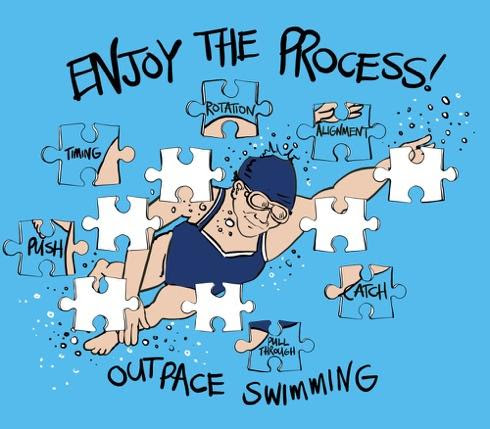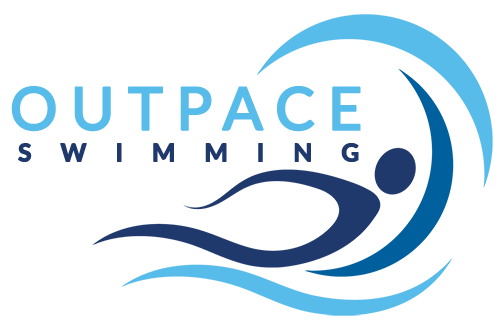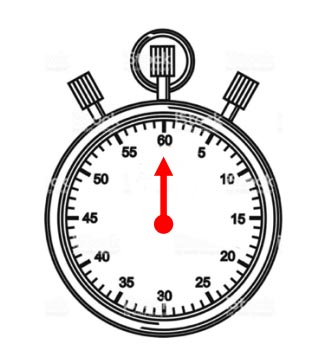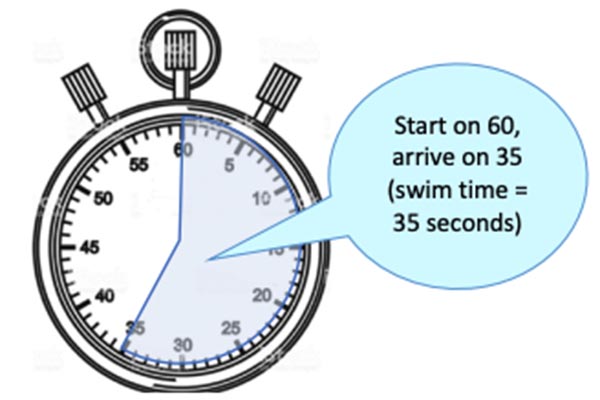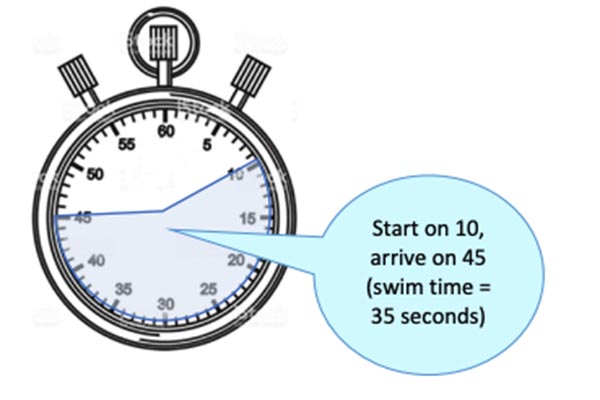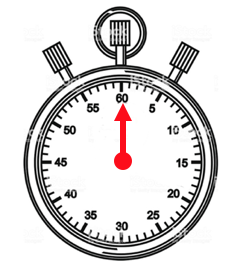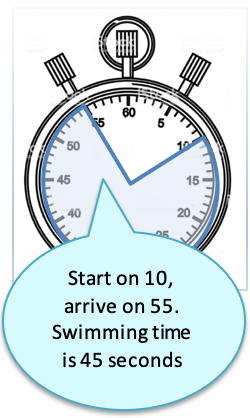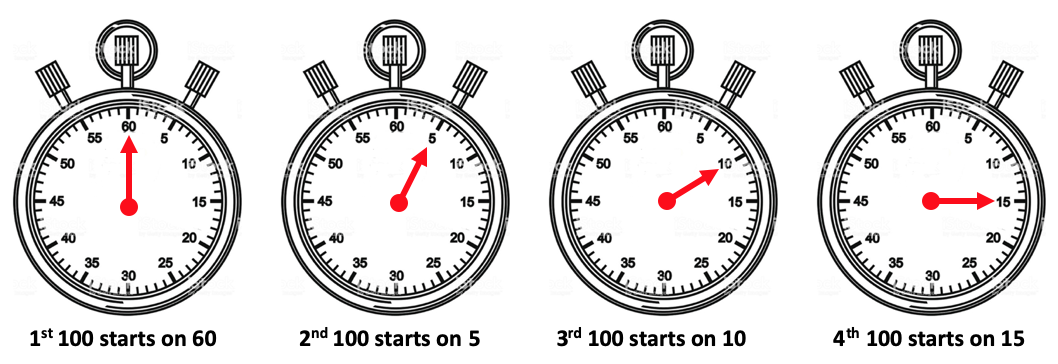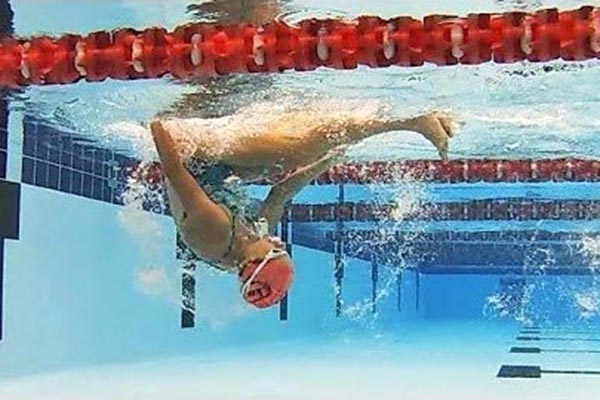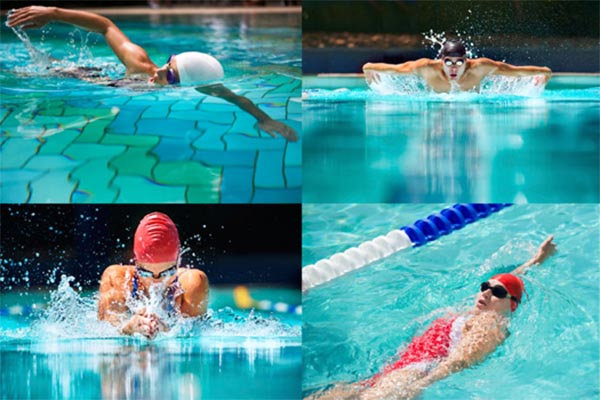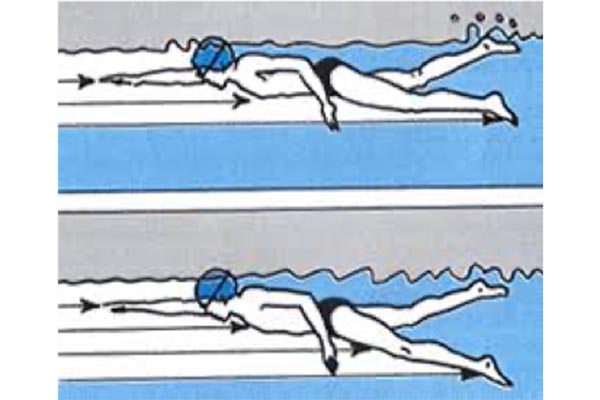What is Front Quadrant Freestyle (FQF)?
Front Quadrant Freestyle is a type of stroke coordination that most elite swimmers use to swim Freestyle. It is widely recognized as being an efficient way to swim.
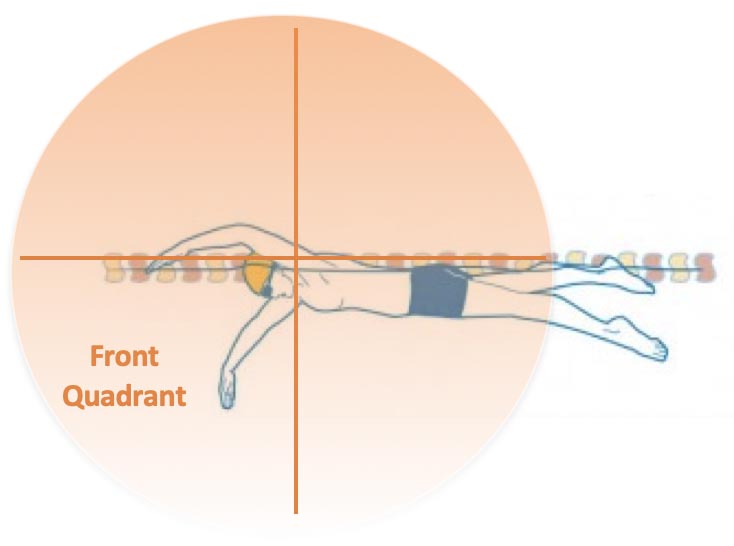
The front quadrant is defined as the front half of the Freestyle stroke underwater.
FQF means that you have both hands located in front of your shoulders line or head at one moment of your stroke. At least one hand is in the front quadrant during the entire stroke cycle.
There are variations in mechanics unique to each individual.
For some swimmers, the front arm starts pulling as the other arm passes in front of the head. For others, the front arm starts pulling when the other arm enters the water.
These variations depend on different factors such as:
- The speed you are swimming: For example, one strategy to swim faster is to increase your stroke rate which means moving your arms faster which would result in having your arms spending less time in front of your head.
- Morphology: For example, taller swimmers naturally have a longer stroke length, but shorter swimmers can find strategies to succeed such as moving their arms faster. This would also result in having their arms spending less time in front of their head.
- Technical level: The more experienced swimmer you become, the greater range of FQF timings you will develop to adapt to different situations. For example, the ability to maintain an efficient technique while swimming faster.
- Swimming condition: In rough open water, the stroke rate is generally higher which would result in having your arms spending less time in the front quadrant.
Click here for an example of Front Quadrant Freestyle
What are the benefits of a correct Front Quadrant Freestyle timing?
1) Improves your breathing timing by preventing breathing too late
Timing is crucial in swimming and it all starts with the timing of your breath.
Breathing too late is one of the most common and problematic issues in all of swimming.
If you breathe too late or too slow, the timing of every other aspect of your stroke will also be later than it should be. This would cause a domino effect of problems, such as making you rotate too much onto one side, weakening the catch of your non-breathing side / arm and making your kick too wide or pause.
FQF helps to breathe earlier in the stroke and to complete the breath before the stroking arm has passed your head level under the water.
How to coordinate your breathing:
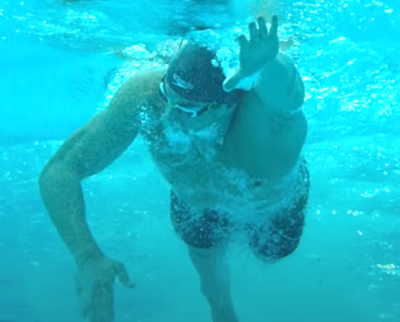
Roll your head to breathe when you are extending your arm out in front of your head (left arm in the photo) and when your other arm is halfway through the stroke about to push back (right arm in the photo).
Tip: Think “reach and rotate”
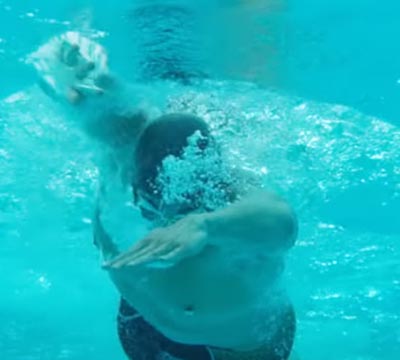
Aim to breathe quickly and to return your head in the water when your arm has just passed above your head (right arm in the photo) and when your other arm is initiating the catch (left arm in the photo).
Drills to help your breathing timing:
Anchor and Single arm (resting arm out in front) will help you to synchronize your breathing timing with your recovery arm.
Single arm (resting arm at side) will help you to synchronize your breathing timing with your stroking arm.
2) Reduces drag
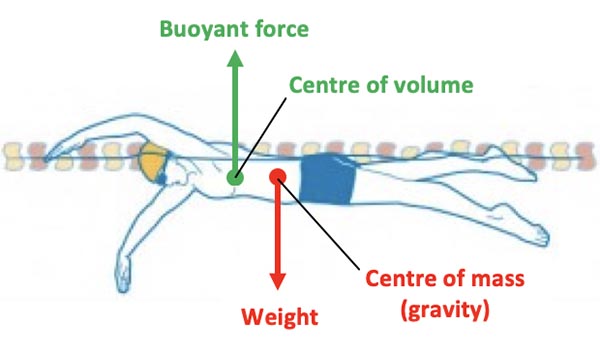
Because your arms are stretched out longer in front of your head in FQF, your weight will be distributed further ahead of your lungs and your centre of gravity will move forward.
This shift will help your legs and hips to get closer to the surface and position your body more horizontal, therefore reducing your drag.
The position of your front arm serves as an anchor, creating forces that support the hips and keep them from sinking.
3) Encourages a better body rotation
Freestyle rotation is the rotation of your hips, torso and shoulders along the long axis of your body. For a proper and efficient freestyle technique, your hips, torso and shoulders should all rotate together in a single motion during each stroke you take.
When facing a swimmer, we look at a rotation somewhere between 30 and 40 degrees angle during the non-breathing stroke and up to 45 degrees when breathing.
What happens if you don’t rotate enough?
If you swim in a flat position, you generate most of the power for your stroke from your shoulders and arms.

These muscles are a lot weaker than your core, back and chest muscles.
Swimming longer distances puts a lot of stress on these smaller muscle groups, which increases the chance of injury.
In addition, the lack of rotation often makes swimmers have a straighter arm position above the water in the recovery position.
This can result in a loss of streamline and cause a wiggle movement of the body or “snaking” from side to side.
In the above photo, the swimmer has to compensate the loss of streamline and balance with a wide scissor kick (foot in the yellow circle).
What happens if you rotate too much?
An over-rotation will likely make you pull deeper in the water with a straighter arm.
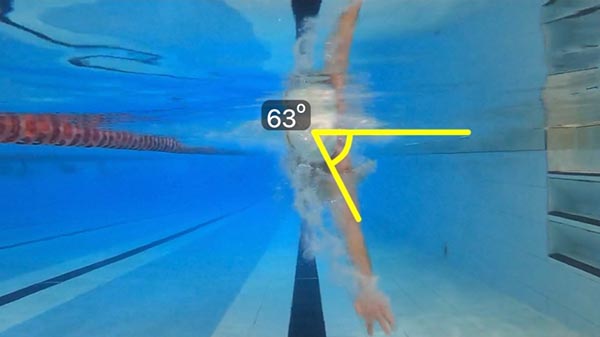
Except for high level sprinters, pulling deep will put your arm and body into a weak position, restricting you from engaging your strong back muscles therefore creating more stress around your shoulders.
This photo shows a swimmer over rotating when breathing.
By keeping one arm in front of your head at all times, FQF will increase your body control and limit your body from rotating too much.
A good rotation will help you transfer power between your arms and shoulders through your core, back and chest muscles. Because these muscles are considered to be some of the strongest in the body, especially for swimmers, you can generate more power.
Additionally, it will help you to reach your arms further during each stroke. As you rotate from side to side, you can further extend your reach and also generate more power with every stroke you take.
Drills to improve your body rotation:
Superman kicks, Side kicks, Kicks’ N Switch, Roll Kicks, Fin Keel, Single arm (resting arm at side) and also the recovery phase drills such as Armpit pause, Popov and Fingertips drag.
4) Encourages a high elbow recovery

With a good body rotation, FQF should help to recover with a higher elbow position.
This results in relaxing the muscles of your arms more as well as leading your arm into a better alignment from hand to shoulder when entering in the water.
The good alignment of your arm should lead your hand to enter the water with fingertips first, positioning your arm for an efficient catch.
Recovering with straight arms will likely make your arm cross over your body mid line when entering in the water, which makes your body swing from side to side. In addition, the straight arm recovery often ends up with a thumb first entry creating an internal shoulder rotation which can result in shoulder (rotator cuff) injuries.
Drills to practice a high elbow recovery:
Armpit pause, Popov and Fingertips drag.
5) Helps to settle your catch and prevent your arms from pulling too soon
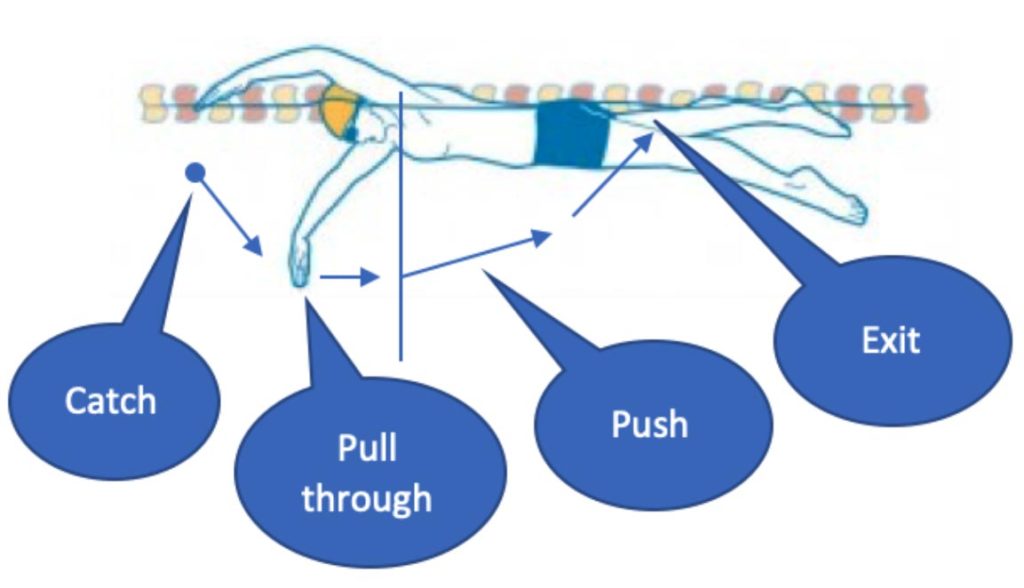
FQF will help your leading arm to stay longer in front of your head. This will give you more time to set up a stronger catch, therefore preventing your front arm from pulling too soon.
When your arm reaches out in front of your head, take your time, don’t rush the catch!
If your catch is correct, you should feel a consistent pressure of the water on the palm of your hand and forearm all way from the catch until your arm exits the water.
Some of the consequences of pulling too soon are:
- Pulling too deep with a straight arm position. This will increase your front drag as well as put your shoulders into a weaker and more vulnerable position
- More shoulder rotation and less hip rotation. The lack of hip rotation will engage your shoulder muscles more than your back muscles. The shoulder muscles are a lot weaker than the back muscles which means a less powerful stroke.
- Less distance per stroke.
Drills to help you set up a good catch and prevent your arms from pulling too soon:
Anchor, Single arm (resting arm out in front), Catch-up
6) Promotes an Early Vertical Forearm (EVF) in the propulsion
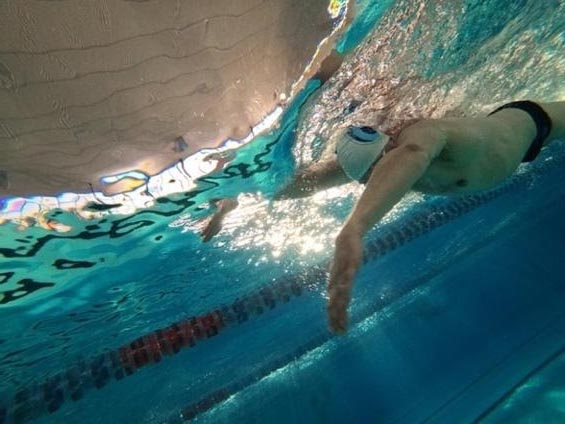
Providing you with more time to settle the catch phase, FQF should also allow you to have more time to bend your elbow in a high position ideally in front of your head or at least at the level of your head.
The goal is to have your hand and forearm facing back as soon as possible in order to increase the distance per stroke.
The drag applied to the hand and forearm is less than the drag applied to the upper arm. Therefore, bending your elbow early in the stroke while keeping your upper arm as close to the surface as possible is the way to go for a much better propulsion efficiency.
How to achieve an Early Vertical Forearm
Begin with the arm outstretched directly in front of your shoulder. Rather than dropping your entire arm to a lower position to initiate the pull, only lower your hand and forearm, keeping the elbow close to the surface. Continue the path downward until your hand is below your elbow.
Drills to help an Early Vertical Forearm:
Catch up, Single arm (resting arm out in front), Fist, Front sculling, Doggy Paddle
7) To increase body length and distance per stroke
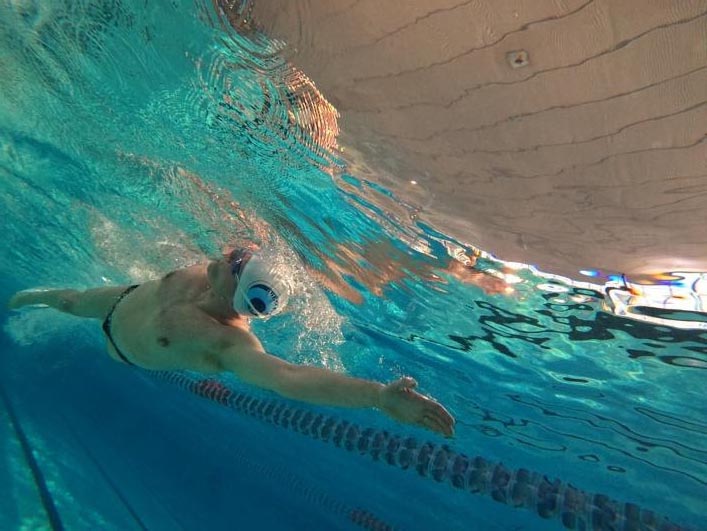
Distance per stroke (DPS) is the distance you travel per stroke and it is a direct reflection of your technique efficiency.
The world’s best swimmers are faster than you because they travel further with each stroke, not because they are moving their arms faster.
Front Quadrant Freestyle will make your distance per stroke longer. With one arm always out in front or above the head you constantly lengthen your body.
As is well known in ship building, a longer hull goes further than a shorter hull at the same speed.
As FQF enables more body rotation, particularly from the hips, your arms get an extra extension out in front.
This will also contribute to a longer distance per stroke.
Find out more about the importance of improving your distance per stroke here.
Drills to help developing a long distance per stroke:
Catch-up, Single arm (resting arm out in front), Long Dog
8) Encourages the acceleration of your arms
Studies show that changing hand velocity in the stroke generate an increased propulsion.
Because the water will move at the same speed as you push it, you must continually accelerate your hand in order to generate power through your stroke. Vice versa, the bigger the force you apply, the more acceleration you get and the longer you apply the force, the bigger the change in momentum you can achieve.
Hand speed should be slowest during the catch and fastest at the finish of the stroke.
As FQF helps you to settle the catch phase, this should help you to progressively accelerate your hand towards the end of the propulsion.
Hand speed is directly related to hand force. The faster hand speed translates to increased force.
Drills to help practicing the acceleration of arms:
Double-arm pulls, Shark fin, 5 strokes & stop and Scull combo
